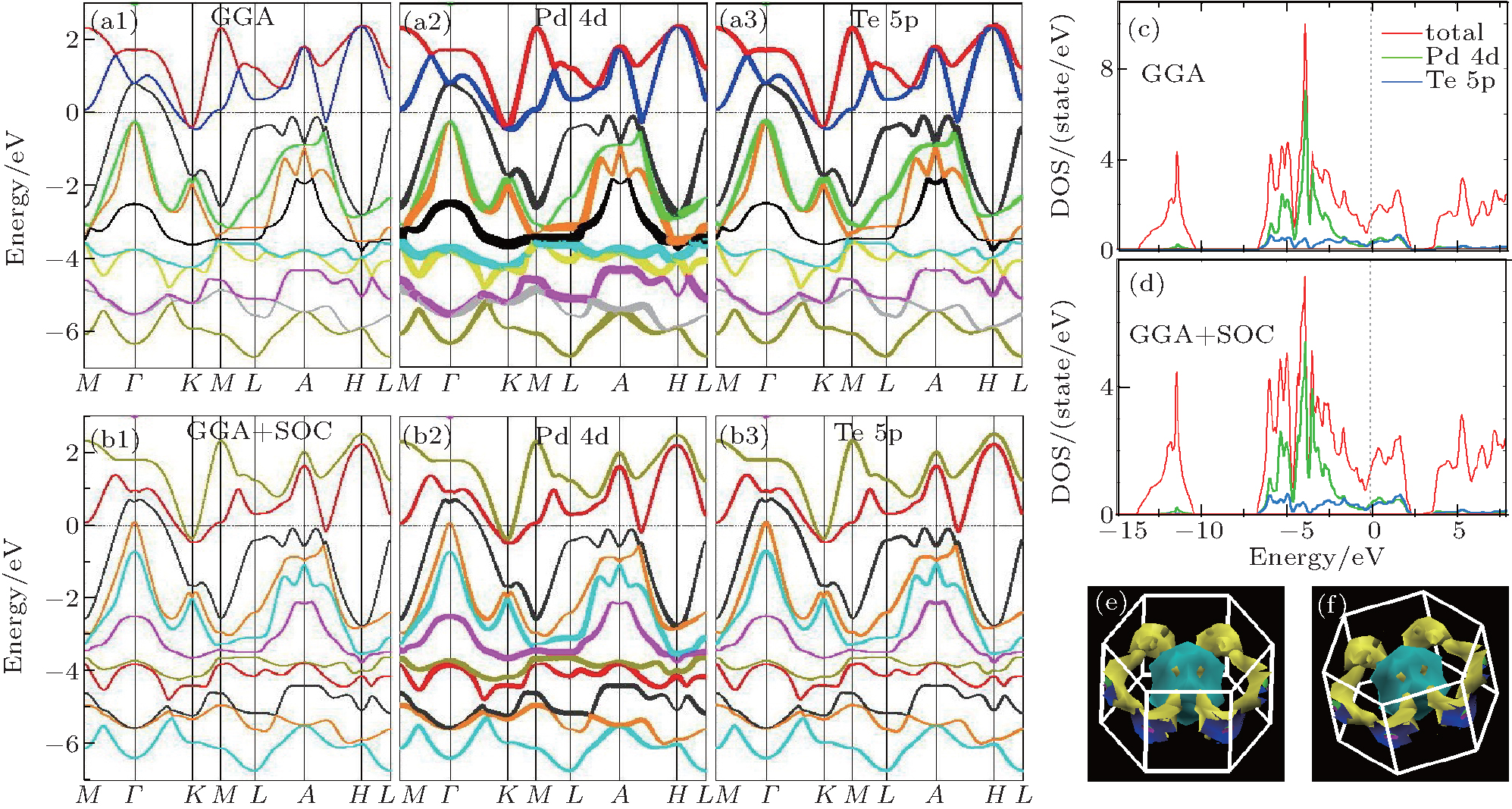Electronic structure of transition metal dichalcogenides PdTe2 and Cu0.05PdTe2 superconductors obtained by angle-resolved photoemission spectroscopy

Electronic structure of transition metal dichalcogenides PdTe2 and Cu0.05PdTe2 superconductors obtained by angle-resolved photoemission spectroscopy |
| Calculated band structure, density of states, and Fermi surface of PdTe2 with and without considering the spin–orbit coupling. (a1)–(a3) Calculated band structure of PdTe2 without the spin–orbit coupling. (b1)–(b3) Calculated band structure of PdTe2 with the spin–orbit coupling. The band character calculations with Pd 4d states ((a2), (b2)) and Te 5p states ((a3), (b3)) highlighted are shown, respectively. Each state is drawn by a dot whose radius is proportional to the specified character of the state. (c) and (d) Calculated density of state without and with the spin–orbit coupling. (e) and (f) Calculated three-dimensional Fermi surface of PdTe2 without and with the spin–orbit coupling. |
 |